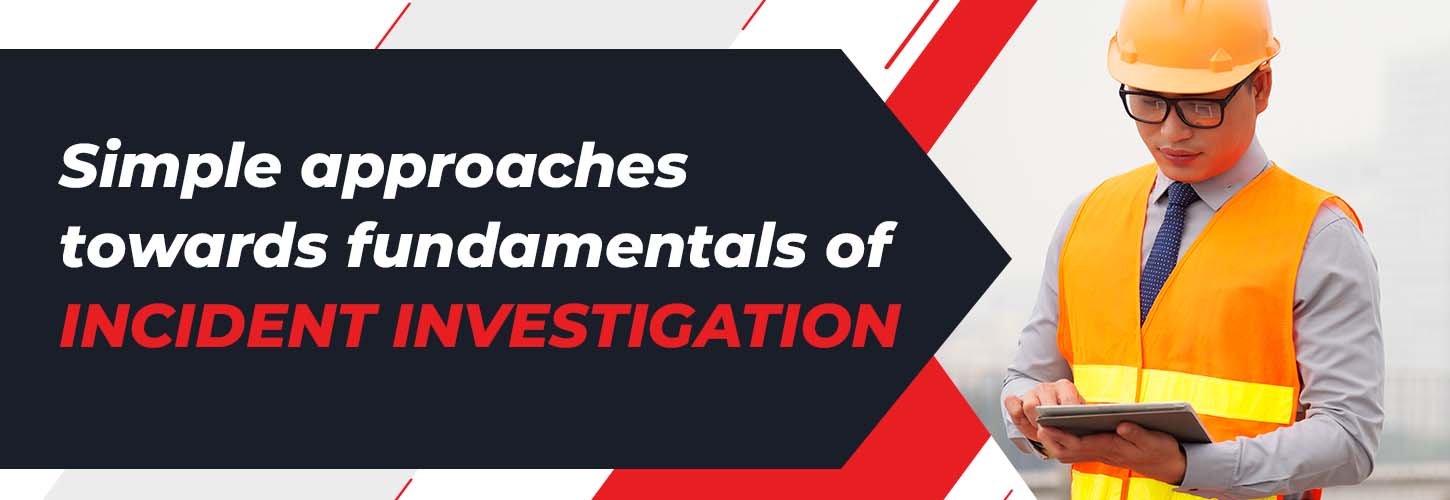What is Incident Investigation?
Incidents are any unexpected, unwanted events that may or may not cause harm to the workers, damage the equipment or the workplace. A worker tripping over a cable of wire across the pathway is an incident. An incident may not cause damage every single time and because it doesn’t workers usually do not report the incidents. An incident happening repeatedly could lead to some severe consequences at one point. For the first time a worker trips he may not fall but if the incident keeps happening it could lead to a fracture.
Reasons for Investigating Incidents:
- There are over 2.3 million cases of accidents every year and these accidents lead to a total loss of over 2.5 billion euros.
- Accidents are expensive and cost way more than implementing safety in the workplace.
- Accidents also lead to pain and suffering for the workers. They can reduce the moral in the workplace.
- It is also a legal requirement to ensure that all incidents are investigated as this would be asked by the local regulatory bodies, clients and the insurance agencies.
Stages of incident investigation
The first step in an incident investigation is to gather the information, having accurate information is the key to finding out what happen. Once the information is gathered the next step is to analyze the information. In this step we need to determine the cause of the incident, based on the information gathered we need to find the immediate causes, underlying causes and the root cause. This will help us determine why the incident occurred and help prevent it from happening again. The next step is to control the risk, after the causes are identified we need find a way to make sure the same incident doesn’t repeat itself again. The next step is coming up with an action plan and implementing that plan.

Crucial steps to consider when carrying out an investigation
- As soon as an incident is reported the priority has to be given to the response. This includes preserving the accident scene, providing medical assistance to the injured and informing the authorities about the incident.
- Gather as much as information as you can by interviewing witnesses, collecting photographs, taking videos and documents related to the incident.
- Assemble an investigation team, ensure that the team consists of members from all disciplines. This helps us to have a diverse set of opinions. We can include people from human resources, health and safety and technical staff.
- After all the data are collected, we need to analyze the data to help identify the cause of the incident.
- All the data collected should be properly documented as this will help to reference the information in the future, it will assist with auditing and other regulatory requirements.
Theories associated with incident investigation
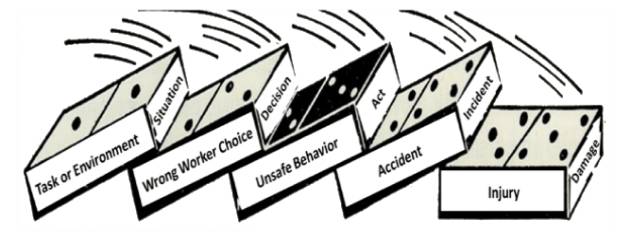
Domino Theory:
According to this theory all the events in the workplace are stacked net to each other, if one falls they all collapse leading to a chain of events which start at the first event that collapsed. Once the basic cause is collapsed the other underlaying causes will also follow. The basic cause can be an unsafe act or unsafe condition in the workplace. The underlaying cause can be the lack of training or supervision provided in the workplace and the fall of any one of these causes will lead to the accident itself.

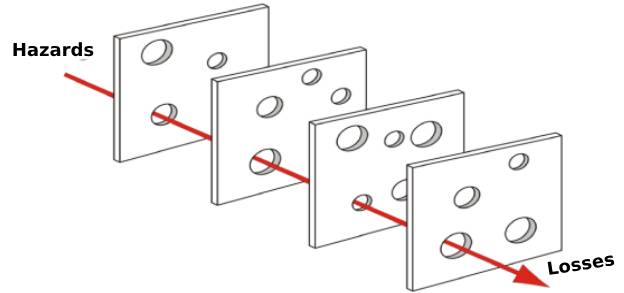
Swiss Cheese Model:
Just like the actual swiss cheese there are a series of barriers that prevent the hazards from causing losses. Each barrier represents the controls implemented in the site and the holes in the barriers are an indication of the weakness in the controls. If all the faults are aligned then there will be an accident in the site. Even if a single barrier was standing we could have prevented the accident from happening. By investigating these faults we can ensure that the incident does not repeat itself again.
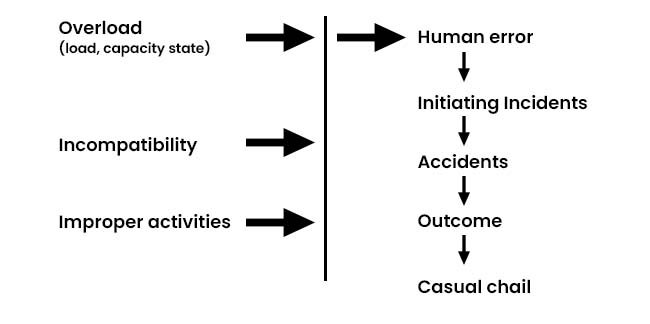
Human factors theory:
The human factor theory helps us to understand the workers behaviors, their capabilities and the limitations on how an incident occurs. It identifies human error or behavior and how these play a vital role in causing incidents. it looks at the amount of work a worker is doing, how stressed the worker is, training provided to the worker, fatigue, communication and organizational culture that play an important role in how workers perform and decision making. By taking into consideration the human factors in incidents we can help come up with strategies to improve worker performance and also reduce the chance of a worker making a error.

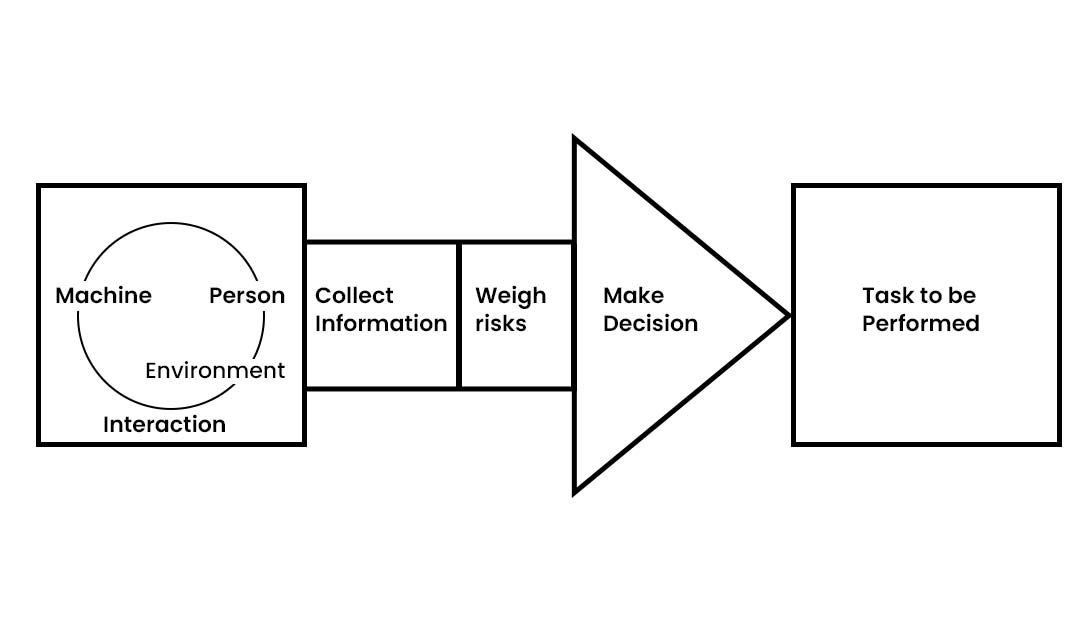

Systems Theory:
This theory looks at incidents as a result of complex interactions between multiple components of the system. It explains that the incident is not a result of an isolated incident by a combination of interactions between the people involved, the process, equipment used and the environment under which the incident occurred. It stresses on the importance of considering various broader organizational and contextual factors when investigating an incident. It urges investigators to analyze the policies in the company, the mode of communications, the system’s structure and procedures to find the weaknesses and implement the right changes based on the issues found.
These theories are not exclusive and investigators explore several other methods to investigate incidents. by exploring multiple approaches, it allows the investigators to get a comprehensive understanding of the incidents. The type of theory applied depends on the nature of incident and the company’s specific needs based on the context.
By investigating incidents we can also ensure that we improve our health and safety management system. It also helps reduce the rate of incidents in the workplace. Over all it helps the company to cut down costs due to workplace incidents. As the saying goes
“If you think safety is expensive, try an accident”
Contact Us
Kindly call our Experts @ +91 8121563728 / +91 8015527650 or mail us @ kalyan.r@greenwgroup.com / indumanasa.m@greenwgroup.com
Get Your Query Answered / Get Expert Assistance To Choose the Right Course for You Or Your Associates

